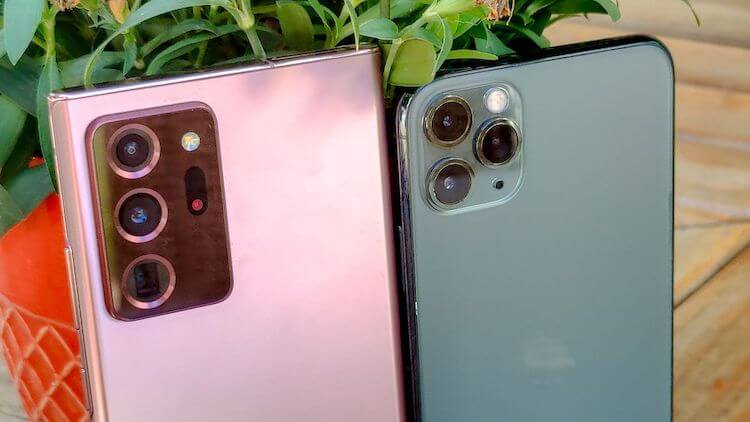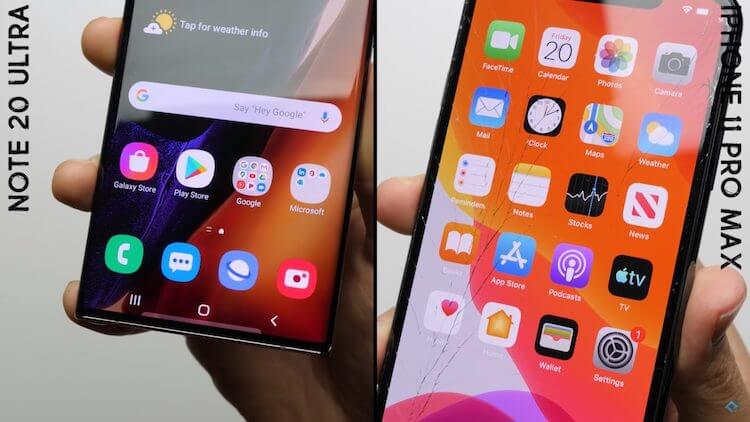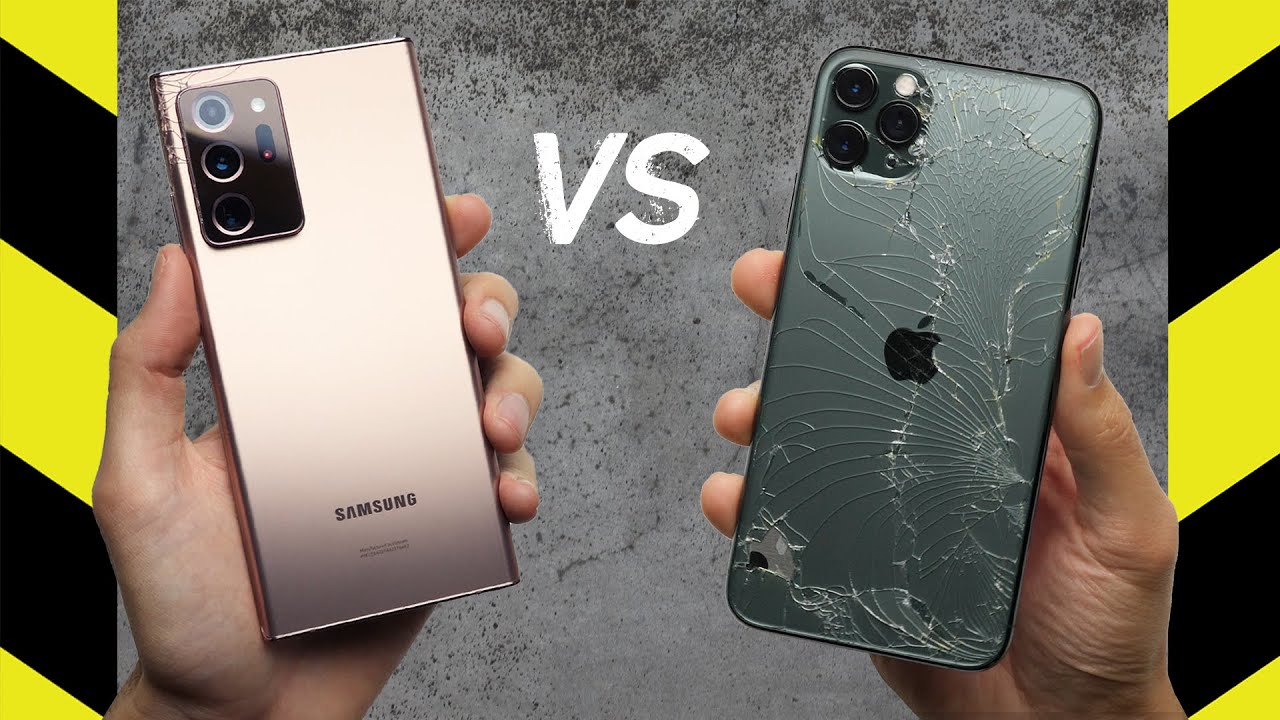The new Samsung Galaxy Note series smartphones came out earlier this month and a lot has been said about them. We even talked about the strength of materials in a separate article. Now we need to talk about how the smartphone resists falls. Moreover, it uses the new Gorilla Glass Victus. Apparently, Corning, which made this glass, did not deceive us and the first smartphone with it really turned out to be very durable. This time, the ruggedness of the Samsung Galaxy Note 20 Ultra was compared to the iPhone 11 Pro Max and the result was strange. On the one hand, everything is logical, but on the other, many expected something different. Who turned out to be stronger and at what comparison?

These two smartphones are asking for comparison.
Drop test Samsung Galaxy Note 20 Ultra
Not so long ago, we wrote about what is inside the Samsung Galaxy Note 20 with a plastic back cover and came to the conclusion that this smartphone is quite easy to repair. A model with a glass back is more difficult to repair, but it also feels different. The experts say that repairing the Galaxy Note 20 Ultra is more difficult than the iPhone 11 Pro Max. But the compensation for the difficulties is that it is more difficult to break it.
How smartphones are tested for strength
It's time for a comparison and the first major head-on collision iPhone between the 11 Pro Max and the Samsung Galaxy Note 20 Ultra came out in a video on the PhoneBuff YouTube channel. In general, the results are pretty obvious, but there is something to think about and everyone will find something for themselves. I'll just tell you what happened to it when it fell, and if it can be used after that.

Looking ahead, this is what happened to smartphones
As usual, these tests are divided into several rounds in which the falls are modeled from less severe to more severe. Naturally, at the beginning, the most gentle falls are made, so as not to break the smartphone ahead of time and gradually approach the limits of its strength.
Which is stronger – Samsung or iPhone?
In the first round of the drop test, both the Galaxy Note 20 Ultra and iPhone 11 Pro Max fell to the back wall. Such a fall could not but leave traces on their steep hulls. Both have visible damage to the glass back, but the back iPhone of the 11 Pro Max shatters much more than the Galaxy Note 20 Ultra.
This is due to the fact that Samsung's flagship comes with Corning Gorilla Glass Victus on both the front and back. Apple has long ceased to focus on what glass is installed in its smartphones, but there is very little doubt that it is Corning.
iPhone 11 Pro Max came out last September and even if it received the brand's newest glass, it could only be Gorilla Glass 6 – the previous generation. As for the new glass, even when it was first introduced, Corning assured that it was able to withstand the fall of a smartphone from a height of two meters. Later, Samsung began to talk about the same. It is clear that all falls are different, but the result is impressive. The strength of the glass on the new Galaxy Note 20 Ultra is reflected in further drop tests at different heights.

The screens also had a hard time.
In the next round, both phones fell to a corner. Such falls are quite dangerous as they lead to deformation of the phone case. This is not noticeable and does not remain in the form of a bent body, but a slight bend occurs and often it is enough for the tempered glass to burst and become covered with many small cracks. Both the screen and the rear panel can be equally affected by such kinking.
In the case of the Galaxy Note 20 Ultra, the damage from falling to an angle was slightly higher than the iPhone 11 Pro Max. Compared to the small scratches on the stainless steel corners iPhone, the Samsung showed scuffs. However, after this test, both phones got off with only cosmetic damage to the frames.
In the third round and bonus round, the Galaxy Note 20 Ultra did really well. In these rounds, the phones were thrown face down. A cracked display can be fatal to a phone, and sometimes a smartphone's touchscreen fails too, making it useless. In the case of iPhone 11 Pro Max, the glass cracked after the first drop, while the Note's screen received only minor scratches.
Then in the extra round, the Note 20 Ultra fell 10 times from a height of about one and a half meters, and surprisingly, it withstood all 10 falls. iPhone, on the contrary, turned into a mess of glass shards. After 10 falls, his camera even stopped working, but at the same time he retained his touch functions

You can watch the full video and make up your impressions of comparing the strength of smartphones, but even without this, it is clear that the new glass is stronger than the old one. Not even so … It is much stronger than the old one!
Why you shouldn't drop your smartphone
True, one must understand that if the smartphone survived after falling even from a great height, outwardly remained intact and it turns on, this does not mean that everything is fine with it. It could have damaged internal components, for example, boards, cables, soldering points and antennas. No one checks the full performance of a smartphone after such falls. No one looks at how the network speed has changed or whether the processor has become worse. Maybe it just turns off after a couple of days and won't turn on.
There are too many fragile components inside the smartphone, the damage of which cannot be immediately identified, so you still should not drop the phone, even if its body remains intact. Although, Samsung and Corning must be given their due. They made a very solid construction!
